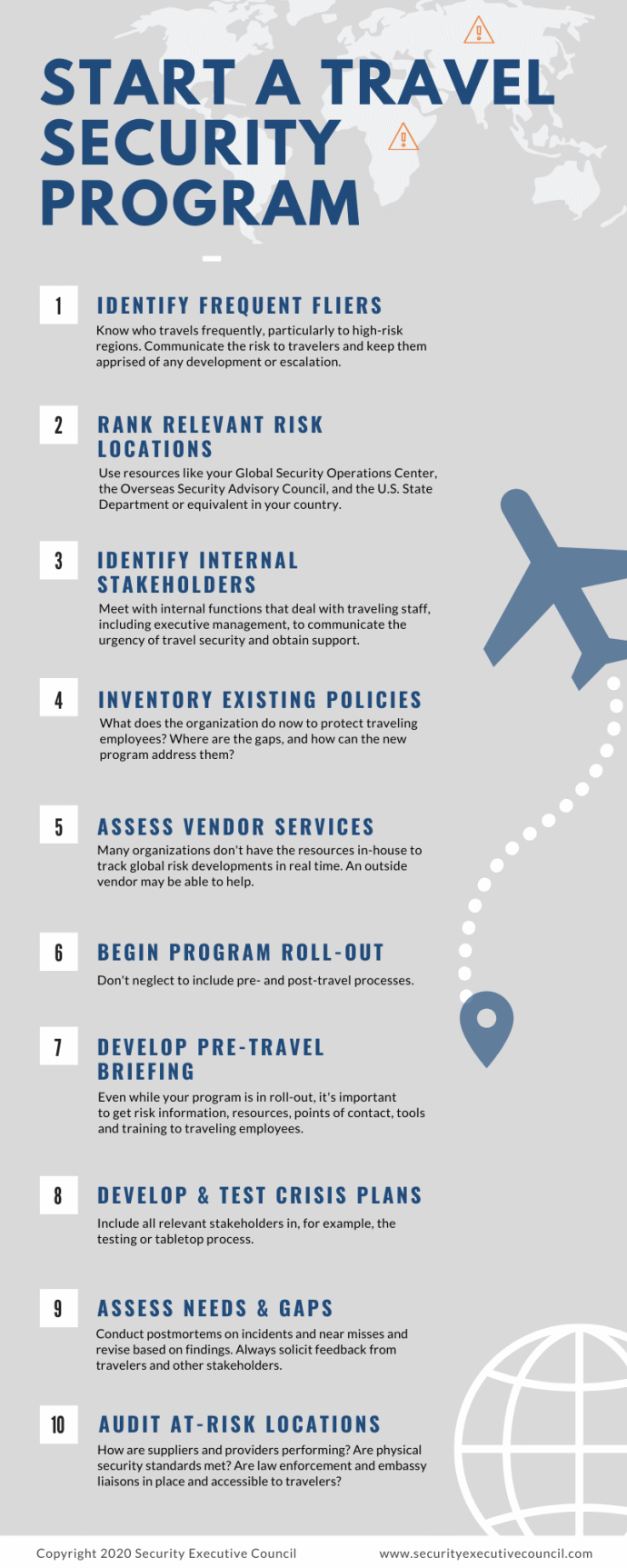Even before the coronavirus was declared a public health emergency of international concern, many risk-aware companies acknowledged the obligation of duty of care to protect their traveling employees.
Those that already had travel security plans and programs in place were well positioned to deal with quarantines, travel bans, and extracting their employees from potentially high-risk regions. After all, employee travel always entails some additional risk and merits enhanced situational awareness.
If your organization doesn't already have a travel security plan or program in place, the coronavirus outbreak serves as a helpful reminder to begin laying the foundation before the next crisis hits.
The SEC has helped large and small companies develop travel security plans for their staff and executives. Below is an abbreviated version of a program development process that has proven effective for several of our clients.
This 10-step process can put your organization on the road to a solid travel security program. Need more details? The SEC can help.
Contact us today.


